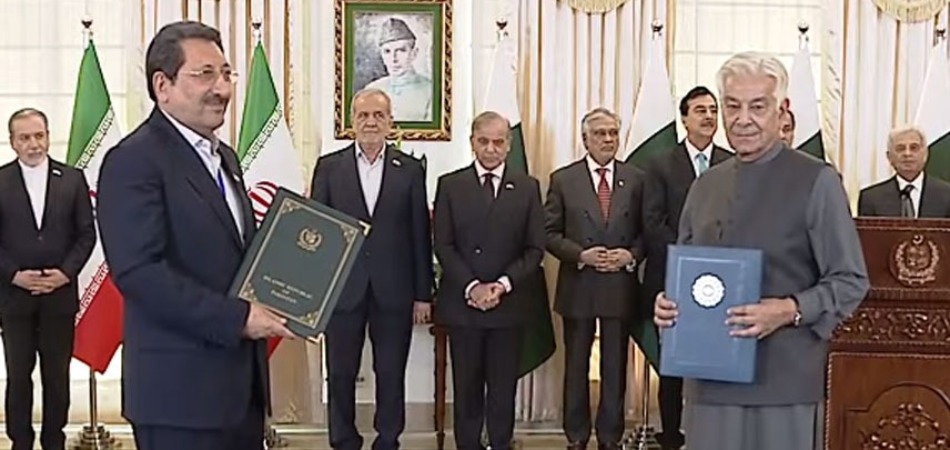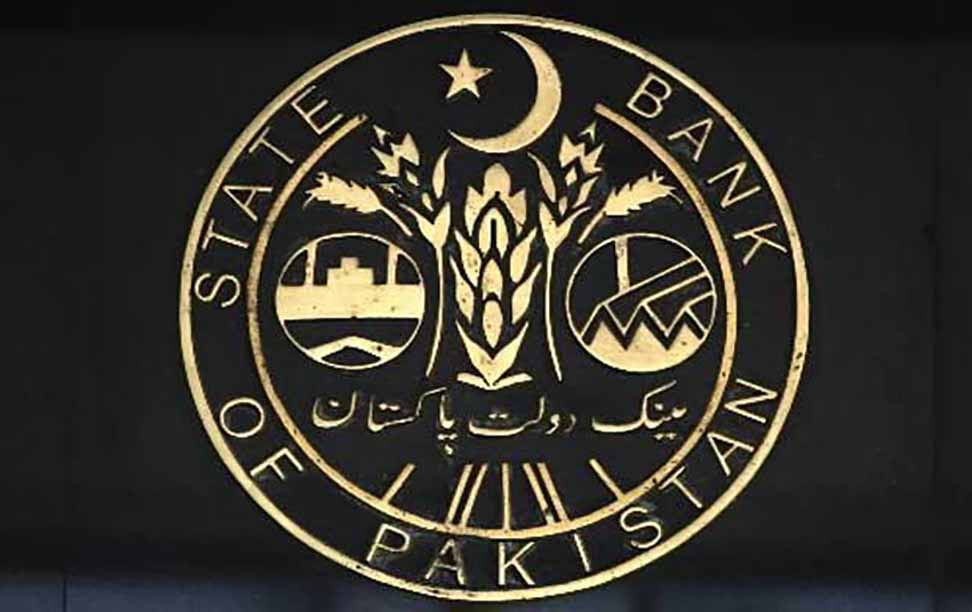Pakistan records real GDP growth to 6% in FY22: SBP

MG News | December 21, 2022 at 03:59 PM GMT+05:00
December 21, 2022 (MLN): Pakistan’s economy has achieved real GDP growth of around 6% for a second consecutive year in FY22, the Annual Report on the State of Pakistan’s Economy released by the State Bank of Pakistan (SBP) revealed today.
The growth was broad-based as both agriculture and industry saw a notable increase that spilled over to the services sector as well.
However, with the continued reliance on consumption as the source of growth, amid sluggish improvement in productivity, the country remained vulnerable to adverse developments in the global economy. Hence, a combination of adverse global and domestic developments led to the reemergence of macroeconomic imbalances during FY22.
The report noted that the expansionary fiscal stance in FY22, an upsurge in global commodity prices, and the fallout of the Russia-Ukraine conflict, led to a marked deterioration in the current account deficit (CAD).
In addition, the delay in the resumption of the IMF program and political instability exacerbated the country’s vulnerability through the depletion of FX reserves. The resulting depreciation in PKR amplified inflationary pressures by magnifying the effect of the global price increase.
Fiscal policy support in the shape of tax incentives for industry, export, and construction, a large increase in provincial development spending, tax incentives, and subsidies to protect consumers from the impact of rising international oil prices, supported the momentum of economic activity.
Also, the lagged impact of monetary stimulus rolled out during the pandemic, SBP’s targets for housing and construction, and capacity expansions under Temporary Economic Refinance Facility (TERF) and Long Term Financing Facility (LTFF) continued to underpin GDP growth.
In addition, the sustained rally in domestic and global demand and receding concerns about the Covid-pandemic also catalyzed the momentum of economic activity during FY22.
However, the impact of accommodative policies contributed to higher-than-planned growth in the economy, and together with the rapid rise in global commodity prices, posing risks to the country’s macroeconomic stability.
Particularly, this led to a sizeable increase in the import bill in FY22 that significantly outpaced the expansion in exports and widened the CAD to a four-year high level.
On the financing side, the net inflow of FX loans and liabilities rose considerably compared to last year, but remained lower than planned commitment amid the delay in the resumption of the IMF program and domestic political instability, leading to a decline in SBP liquid reserves during FY22.
The external account pressures, together with the appreciation in the USD index especially in the second half of the fiscal year, led to a substantial depreciation in the PKR, which further magnified the combined effect of elevated domestic demand and the global commodity price increase, leading to a rise in inflationary pressures.
National Consumer Price Index (NCPI) inflation reached the double-digit level of 12.2 percent in FY22, exceeding the SBP’s revised projection of 9-11 percent.
The food group, particularly the non-perishable category was a major source of inflation because of the persistent increase in global food prices of imported commodities (such as palm oil and tea), alongside the supply-demand gaps in some commodities (in particular, milk and meat).
Furthermore, Fuel inflation also remained at an elevated level during the year. Inflation in the non-food-non-energy (NFNE) group also swelled during FY22, indicating both demand and cost-push pressures.
On the fiscal side, while the sharp pickup in imports boosted tax collection, a broad-based increase in fuel subsidies widened the fiscal and primary deficit during FY22.
The expansion in current spending pared the fiscal space for federal development spending during the year. Tax collection at both federal and provincial levels nonetheless edged up.
FBR taxes achieved a six-year high growth and slightly exceeded the upward revised budget estimate for the year. The major impetus came from import-related taxes that constituted more than two-thirds of the overall FBR tax collection in FY22.
In line with the widening imbalances in the external and fiscal accounts, the public debt burden increased during FY22. Also with the rising interest rates during the year domestic debt servicing requirements increased during FY22.
As the macroeconomic challenges during the year rose, the government and the SBP undertook various corrective measures to curb the pace of domestic demand:
(i) raising the policy rate by a cumulative 675 bps
(ii) tightening the prudential regulations for auto and consumer financing
(iii) imposition of 100 percent cash margin requirements (CMR) on a number of import items
(iv) increasing the cash reserve requirement (CRR) for commercial banks
(v) increasing FED on locally assembled cars
(vi) elimination of various tax exemptions under the Supplementary Finance Act
(vii) imposition of ban on import of non-essential items
(viii) gradual rollback of fiscal package.
The report further noted that the experience from FY22 brings once again the need to address the country’s structural weaknesses, such as a narrow base of foreign exchange earnings and meager inflows of foreign investment.
Therefore, a concerted approach is required to encourage increased localization of the manufacturing base, along with the lowering of energy intensity of the economy by ensuring energy efficiency and conservation. Moreover, amid the growing issues related to climate change and inadequate food security situation, there is an urgent need to formulate a well-thought-out strategy to meet these challenges.
Priority should be given to producing new varieties of seeds that are suitable to varying weather conditions and to devising a framework that emphasizes water management strategies to increase agricultural productivity.
Finally, transforming the structure of the industry to a highly technology-intensive sector is also needed.
However, this requires a voluminous increase in investment in physical and human resources for a sustained period.
The rising share of the young population in Pakistan provides an opportunity to reap the demographic dividend.
In this regard, the special chapter in this report sheds light on understanding the potential of demographic dividends in Pakistan.
The chapter suggests that investment to improve the quality of human capital, and good governance, alongside an enabling macroeconomic environment that ensures high savings and investments, pro-industrial policies, and efficient markets are some key requirements to yield gains from the demographic window.
Copyright Mettis Link News
Related News
| Name | Price/Vol | %Chg/NChg |
|---|---|---|
| KSE100 | 141,902.01 172.43M | 0.61% 867.03 |
| ALLSHR | 87,769.70 283.83M | 0.52% 451.47 |
| KSE30 | 43,626.54 62.58M | 0.67% 292.00 |
| KMI30 | 202,465.94 65.90M | 0.67% 1348.97 |
| KMIALLSHR | 58,717.36 189.44M | 0.62% 360.14 |
| BKTi | 38,540.29 7.72M | 0.72% 275.13 |
| OGTi | 30,183.42 21.75M | 0.82% 245.00 |
| Symbol | Bid/Ask | High/Low |
|---|
| Name | Last | High/Low | Chg/%Chg |
|---|---|---|---|
| BITCOIN FUTURES | 114,650.00 | 115,400.00 114,300.00 | 1080.00 0.95% |
| BRENT CRUDE | 69.50 | 69.58 68.95 | -0.17 -0.24% |
| RICHARDS BAY COAL MONTHLY | 96.50 | 0.00 0.00 | 2.20 2.33% |
| ROTTERDAM COAL MONTHLY | 104.50 | 104.50 104.50 | -0.30 -0.29% |
| USD RBD PALM OLEIN | 998.50 | 998.50 998.50 | 0.00 0.00% |
| CRUDE OIL - WTI | 67.21 | 67.30 66.56 | -0.12 -0.18% |
| SUGAR #11 WORLD | 16.20 | 16.42 16.12 | -0.15 -0.92% |
Chart of the Day
Latest News
Top 5 things to watch in this week
Pakistan Stock Movers
| Name | Last | Chg/%Chg |
|---|
| Name | Last | Chg/%Chg |
|---|



